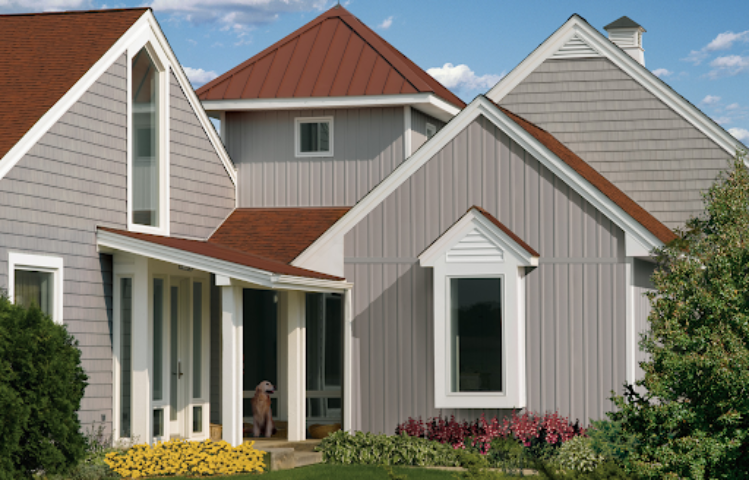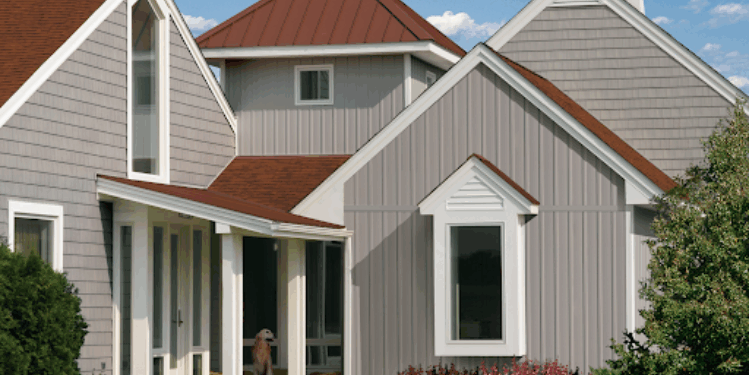As Best Eco-Friendly Siding Options for Modern Homes takes center stage, this opening passage beckons readers into a world crafted with good knowledge, ensuring a reading experience that is both absorbing and distinctly original.
In the following paragraphs, we will delve into the importance of eco-friendly siding, explore different materials available, discuss energy efficiency, environmental impact, recycling, and design considerations.
Introduction to Eco-Friendly Siding

Choosing eco-friendly siding options for modern homes is crucial in promoting sustainability and reducing the environmental impact of construction. By opting for eco-friendly siding materials, homeowners can contribute to a greener future while enjoying a range of benefits.
Key Benefits of Using Eco-Friendly Siding Materials
- Energy Efficiency: Eco-friendly siding materials can help improve a home's energy efficiency, reducing heating and cooling costs.
- Durability: Many eco-friendly siding options are durable and long-lasting, reducing the need for frequent replacements.
- Low Maintenance: Some eco-friendly siding materials require minimal maintenance, saving time and effort for homeowners.
- Improved Indoor Air Quality: Certain eco-friendly siding options are non-toxic and do not release harmful chemicals into the air, promoting healthier indoor environments.
How Eco-Friendly Siding Contributes to Sustainability in Construction
Eco-friendly siding contributes to sustainability in construction by reducing the use of virgin materials, minimizing waste, and lowering energy consumption during the manufacturing process. Additionally, sustainable siding options often have lower carbon footprints compared to traditional materials, making them a more environmentally responsible choice for modern homes.
Types of Eco-Friendly Siding Materials
When it comes to eco-friendly siding options for modern homes, there are several materials available in the market that offer sustainability and durability. Let's explore some of the most popular choices:
Reclaimed Wood
Reclaimed wood siding is sourced from old barns, warehouses, and other structures, giving it a unique and rustic look. This material is environmentally friendly as it reduces the need for new trees to be cut down. However, it may require more maintenance compared to other siding options due to its natural properties.
Fiber Cement
Fiber cement siding is a blend of cement, sand, and cellulose fibers, making it a durable and low-maintenance option. It is resistant to fire, insects, and rot, making it a long-lasting choice for eco-conscious homeowners. Additionally, fiber cement siding is available in a variety of styles and colors to suit different design preferences.
Engineered Wood
Engineered wood siding is made from wood fibers and other materials, providing a more sustainable alternative to traditional wood siding. It offers the appearance of real wood but is more resistant to moisture and pests. Engineered wood siding is easy to install and requires minimal maintenance, making it a practical choice for those looking for an eco-friendly option.
Energy Efficiency and Insulation
When it comes to modern homes, energy efficiency is a key consideration for homeowners looking to reduce their environmental impact and save on utility costs. Eco-friendly siding materials play a crucial role in improving the overall energy efficiency of a home.
Thermal Insulation Properties
Various eco-friendly siding materials offer excellent thermal insulation properties, helping to regulate indoor temperatures and reduce the need for excessive heating or cooling. For example, insulated vinyl siding comes with a layer of foam insulation that can enhance the overall energy efficiency of a home by minimizing heat transfer through walls.
- Natural wood siding, when properly installed and maintained, can also provide good insulation, helping to keep the interior of a home comfortable year-round.
- Stone siding, such as limestone or granite, has natural insulating properties that can help regulate indoor temperatures and reduce the reliance on heating and cooling systems.
Cost Savings Benefits
By choosing eco-friendly siding options that offer superior insulation properties, homeowners can significantly reduce their heating and cooling costs throughout the year. The improved energy efficiency of these materials translates to lower energy bills and a reduced carbon footprint.
Environmental Impact and Recycling
When it comes to siding materials, the environmental impact is a crucial factor to consider. Traditional siding materials like vinyl and aluminum can have negative effects on the environment due to their manufacturing processes and disposal. On the other hand, eco-friendly siding options prioritize sustainability and minimal environmental impact.
Recyclability and Sustainability of Eco-Friendly Siding Materials
Eco-friendly siding materials such as wood, fiber cement, and reclaimed wood are known for their recyclability and sustainability. Wood siding, for example, is biodegradable and can be easily recycled or repurposed. Fiber cement siding is made from sustainable materials like wood pulp and cement, making it a durable and eco-friendly option.
Reclaimed wood siding utilizes recycled materials, reducing the need for new resources and minimizing waste.
Using Recycled Content in Siding Production
One way eco-friendly siding materials contribute to reducing waste is by incorporating recycled content in their production. For instance, recycled wood fibers can be used in the manufacturing of fiber cement siding, reducing the demand for new materials and promoting a circular economy.
This practice not only minimizes waste but also helps conserve natural resources and lower carbon emissions associated with traditional siding production.
Aesthetics and Design Considerations
When choosing eco-friendly siding for modern homes, it's essential to consider how the material will complement the overall design aesthetic. The siding should not only be environmentally friendly but also enhance the visual appeal of the house.
Versatility and Design Options
Eco-friendly siding materials offer a wide range of design options and versatility to suit various modern home styles. From sleek and minimalist designs to more rustic and natural looks, there is a sustainable siding option for every aesthetic preference. For example, reclaimed wood siding can add warmth and character to a contemporary home, while metal siding offers a sleek and modern appearance.
Examples of Modern Homes
Many modern homes have successfully incorporated eco-friendly siding to enhance their aesthetic appeal. For instance, a house with a minimalist design may use fiber cement siding in neutral tones to create a clean and contemporary look. On the other hand, a home with a more industrial style could opt for corrugated metal siding to achieve a modern and edgy appearance.
These examples showcase how eco-friendly siding can elevate the design of modern homes while still prioritizing sustainability.
Closing Notes
In conclusion, embracing eco-friendly siding options not only benefits the environment but also enhances the aesthetics and functionality of modern homes. By choosing sustainable materials, homeowners can make a positive impact on the planet while enjoying long-lasting, energy-efficient siding solutions.
Query Resolution
What are the key benefits of using eco-friendly siding materials?
Eco-friendly siding materials offer sustainability, durability, and reduced maintenance requirements compared to traditional options. They also contribute to energy efficiency and can help lower heating and cooling costs.
How do eco-friendly siding options contribute to sustainability in construction?
Eco-friendly siding materials reduce the environmental impact of construction by using sustainable resources, promoting recycling, and decreasing waste. They play a crucial role in creating eco-conscious and energy-efficient modern homes.
What are some design considerations when choosing eco-friendly siding for modern homes?
When selecting eco-friendly siding, consider the aesthetic appeal, versatility, and design options available. Ensure the siding complements the overall design of the modern home while meeting sustainability and energy efficiency goals.









